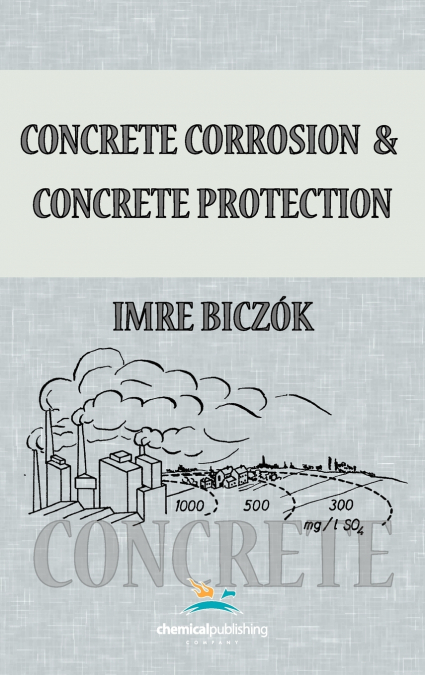
Imre Biczok
Contents - Preface to the English edition - Preface to the German edition - Introduction -CHAPTER I. - The basic materials of concrete - A) Cements and their resistance to corrosion -1. The composition of cements -2. The hydration of cement -3. The resistance of various cements to chemical attack -B) Aggregates -1. Sand -2. Gravel -3. Crushed stone -4. Blast-furnace slag -5. Coal slag -6. Other aggregates -7. Conclusion -C) Mixing water -CHAPTER II. - Groundwater -A) Engineering hydrology - 1. Determination of the highest groundwater table -2. Determination of variations in the highest groundwater table -3. Groundwater flow - 4. Hydrochemical groundwater maps -B) Groundwater sampling -C) Soil sampling -D) The reliability of analytical data of groundwater and soil samples -E) Investigation of groundwater and soil properties - CHAPTER III. - The corrosion and protection of concrete -A) The investigation of concrete corrosion -1. Corrosion research2. Rapid methods of corrosion testing -3. The performance of corrosion tests -4. Summary -B) General aspects of corrosion -C) Leaching corrosion of concrete due to soft water -1. The hardness of water and its effect -2. The effects of soft river water and groundwater in motion -3. Effects of soft water seeping under pressure -4. The effect of warm soft water -5. The effect of cement type - 6. The effect of concrete density -7. Effect of the concrete surface -8. Dimensions and age of concrete -9. Protective measures against the leaching action of water -D) Concrete corrosion due to attacking compounds -CHAPTER IV.Factors increasing or reducing corrosion -A) Corrosion of concrete due to flowing groundwater -B) The corrosive effect of warm groundwater -C) Corrosion due to fluctuations of the groundwater table -D) Corrosion in the range of evaporation -E) Thin-walled concrete objects, concrete canals, piles etc -1. Cases of corrosion -2. Protective measures -F) The effect of air oxidation -G) Microbiological corrosion (caused by sulphur bacteria) -1. Sulphate-forming bacteria -2. Sulphate-reducing bacteria -3. Attempt at bacterial protection of concrete -4. Iron organisms -CHAPTER V.Detailed discussion of protective measures against corrosive effects -A) Passive protective measures -1. Selection of the suitable concrete mix and method of placement -2. Surface treatments -3. Other methods of protection -4. Perfect sealing (waterproofing) -B) Active protective measures -1. Exclusion of aggressive water -2. Neutralization of aggressive water by chemical and biological methods -C) Repair of damaged concrete -Conclusion -Bibliography -Index -